Eyes on the road
Contribution to SDGs
This story is an example of Clariant’s contribution to SDG 3 and SDG 9. Read more in Sustainable Development Goals
-
Ensure healthy lives and promote well-being for all at all ages
-
Build resilient infrastructure, promote inclusive and sustainable industrialization and foster innovation
Clariant’s Oil Services business has introduced a new technology to keep their truck drivers and the drivers around them safe.
Trucking is a tough job. In the United States of America alone, there are over twelve million registered large trucks that collectively travel around 300 billion miles each year. While improvements in technology and training have made the job of driving these trucks a lot safer in recent decades, it still comes with both an inherent risk and a huge responsibility.
In an effort to keep its delivery, long-haul drivers and those around them safe, Clariant’s Business Unit Oil and Mining Services has recently deployed a unique combination of new technology and training for its entire North American truck fleet. Collectively, Oil Services’ drivers in the USA cover about 18 million miles on the road each year. »Still, driving is the most dangerous part of our job,« says Cody Applin, Regional Operations Manager for Oil Services in Midland, Texas. That is why, in 2018, the Oil Services business chose to install a state-of-the-art safety and transportation system called SmartDrive in all of its roughly 200 heavy commercial trucks. These trucks deliver products to customers out in the field.
»Driving out here can be tough, and it comes with a big responsibility because we often carry hazardous materials,« says Eduardo Rodriguez. He is the head driver for the Midland site, the business’s largest operation in the United States. Coming up on thirty years behind the wheel, he joined Clariant six years ago and today trains the company’s drivers and new hires. He’s also on the road every single day.
The Oil Services site in Midland is located in the heart of the Permian Basin, an area of more than 80 000 square miles that covers parts of Texas and New Mexico. The Basin is home to what has become the most productive oil field in all of the USA since its discovery about a century ago, with production reaching four million barrels per day for the first time in 2019. Clariant’s Midland site supplies customers in the oil industry with specialty chemicals and services. Delivering these products to customers is no small feat. Midland, which is nicknamed »The Tall City« for its impressive downtown skyline, has a population of about 160 000. However, some of the counties in the Permian Basin are among the least populated in the United States. »This is pretty much the textbook definition of ‘the middle of nowhere,’« says Applin. The oil rigs and other facilities that his drivers head out to are scattered over a two-hundred-mile radius.
UNITED STATES OF AMERICA
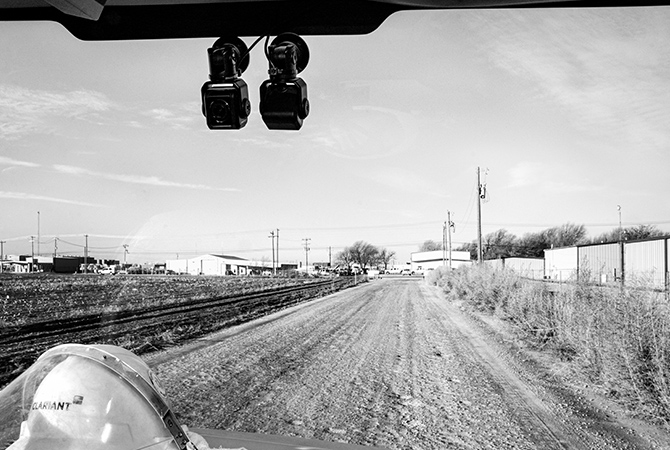
Off the main road
A typical route for Clariant’s drivers involves miles on unpaved tracks.
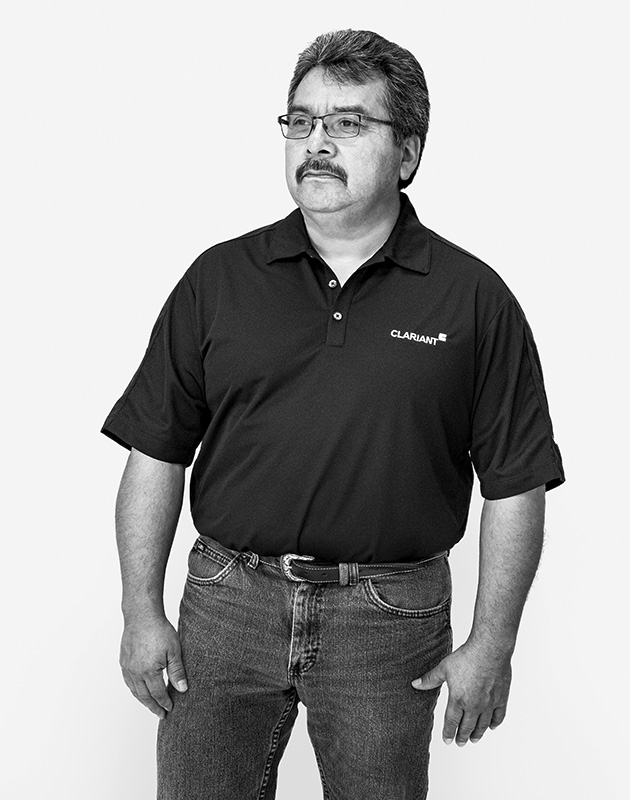
Eduardo Rodriguez
Treater Truck Driver, Business Unit Oil and Mining Services
Not alone anymore
A typical route for Eduardo Rodriguez and his fellow drivers will involve 30 to 45 individual stops. Most of the routes start on Interstate 20, which passes Clariant’s site only a few hundred yards away. Often drivers will eventually have to turn off the main road and follow unpaved tracks on a customer’s property for a few miles to make several stops. »Sometimes, we don’t leave a customer’s lease for the entire day,« says Rodriguez. »And for the most part, you’re all on your own out there – if it weren’t for SmartDrive.«
Under the new system, every Clariant truck is fitted with two cameras. One camera faces inward and captures what the driver is doing. The other camera captures what is occurring in front of the vehicle. Sensors are used to capture video footage and data that occur in critical situations. That can be anything from a collision to erratic maneuvers. The sensors pick up on hard brakes, revving engines, lane changes, and U-turns. The system runs the entire time but only records inside the cabin when it is triggered by an event. It then captures a maximum of 20 seconds’ worth of data – ten seconds leading up to the event and another ten seconds thereafter. Drivers can also trigger the recording manually, whenever they feel they need to document what’s going on. The data and footage are then automatically uploaded and reviewed by dedicated SmartDrive analysts. Any relevant events are made available to Clariant within 24 hours.
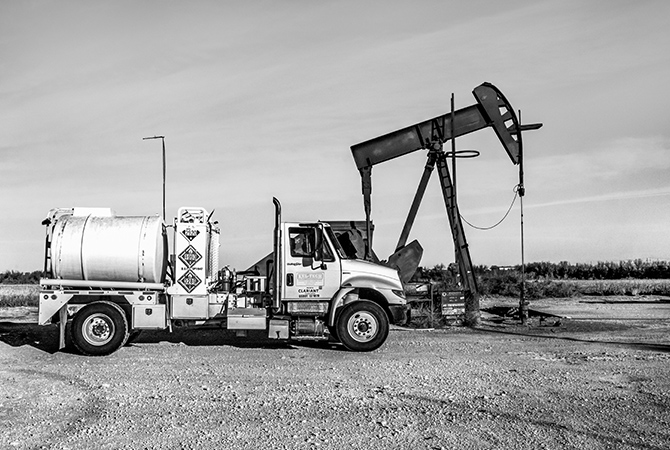
The middle of nowhere
Clariant’s trucks deliver products to individual oil rigs out in the field.
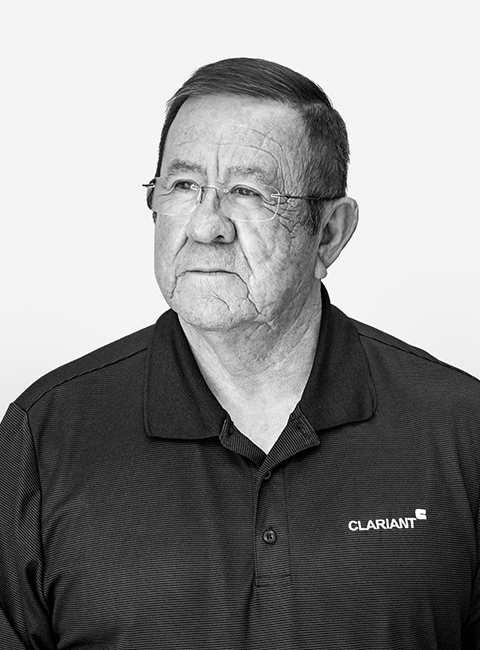
Liovijildo Arrieta
Regional Department of Transportation (DOT) Manager, Business Unit Oil and Mining Services
»Back in the 1980s, it was dangerous on the road. The industry improved a lot since then.«
Liovijildo Arrieta Regional Department of Transportation (DOT) Manager, Business Unit Oil and Mining Services
That’s where Liovijildo Arrieta comes in. He goes by »Leo,« and he helps ensure the drivers and trucks meet the safety standards in the Permian. Prior to joining Clariant, he was a Texas state trooper for 33 years, some of that time in Commercial Vehicle Enforcement. Driving his patrol cars on these roads, he’s seen his share of tragedy. »Back in the old oil-boom days of the 1980s, it was dangerous just to be on the road,« he says. He remembers a particular stretch of road just off the Interstate 20 with several truck stops where countless oil trucks would pull in and out all day and night. »They would have an accident there literally every day,« he remembers. »But traffic has changed and the industry has improved a lot since then.« Leo is part of that change. He oversees and inspects Clariant’s drivers and vehicles transporting hazardous materials throughout the Permian Basin. And he’s responsible for most of the training and debriefing done with the help of data collected by the SmartDrive sensors and cameras. »I review every incident where there’s something we need to address, and then I immediately call in the driver. Some are new drivers that carry over old habits. I remind them of our safety rules and that we’re a safety-minded company. I rarely have these conversations twice,« says Arrieta.
A massive improvement
The new safety and transportation intelligence system is more than just a tool to document accidents or near misses. The data it collects has a profound impact on training and promoting safe driving. By tracking certain behaviors such as speeding, unfastened seatbelts, short following distances, or the use of mobile devices while driving, the system helps focus training on things that urgently need fixing. Just as importantly, it then shows whether the training has actually worked. The results speak for themselves: In the first year since introducing the technology in all its trucks, Clariant Oil Services was able to improve its aggregated Safety Score by 97%. »The biggest impact we’ve had was with seatbelts,« says Rodriguez. »Especially out on unpaved roads and with so many stops, drivers can get complacent. We’ve put a stop to that and we are now close to 100% seatbelt use.« Other areas have seen similarly encouraging results. A recent safety report prompted the business to set even higher goals for the coming year.
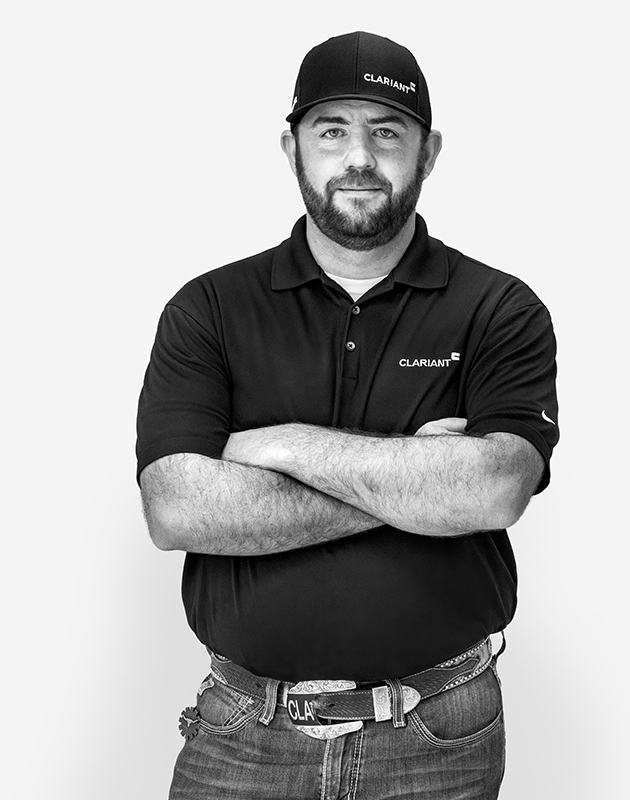
»And it’s not about showing where our guys did something wrong.«
Cody Applin Regional Operations Manager Oil Services, Business Unit Oil and Mining Services
To Cody Applin, one of the keys to success is the combination of video and immediate training. »Using video to back up any discussion: that’s what brings down the numbers,« says Applin. »And it’s not just about showing where our guys did something wrong.« He remembers a particularly harrowing incident where one of his trucks was hit from behind while making a turn. As the footage showed, the driver wasn’t at fault. »Our guy was wearing his seatbelt. He was in his lane with his turn signal on, checking his mirrors, when out of nowhere this speeding truck hits him,« Applin recalls. Luckily, nobody was hurt. Applin and Arrieta made a point of showing the video of the impact and the flying debris during their next workshop with drivers. It left a lasting impression: »Seeing that and knowing it’s not just something on the five o’clock news, but really one of us, well, it hits home!«
A true asset for drivers
Securing video evidence is also a valuable asset to exonerate drivers. »Having that many trucks out on the road makes you a target,« says Applin. »Our drivers get accused of all sorts of things, but when we then look at the footage, nine times out of ten, it’s not them that were at fault.« Applin recounts a recent incident where another truck cut in close in front of one of his drivers and then slammed the brakes. »Our guy inevitably rear-ended that truck. And normally we would have been at fault for following too close. Fortunately, the footage clearly showed that wasn’t what happened.«
Eduardo Rodriguez has been the victim of similar calls himself. One time a company blamed him for hitting and damaging one of their gates out in the field. »Luckily, we were able to pull the recording,« he remembers. The footage of his front-facing camera backed him up: »The video showed that the gate was already all messed up before I even got there.«
Knowing that you’re not out there alone and that your company has your back is what makes a big difference in Rodriguez’s mind. »Trucks are generally seen as a nuisance, you know. Everybody needs us, but nobody wants us on the road. So you have to be at your best, and you need to stay very aware of your surroundings at all times,« he says. »And even then you get accused.«
Just like with other new technologies, from GPS tracking to modern emergency brake systems, the hope is that, with these safety intelligence systems becoming the norm, trucking becomes a lot safer. »We want to make sure everybody gets home safe after their day’s work,« says Applin. »That includes our guys and everybody else out there on the road.« Unlike other innovations in road safety, safety intelligence also has the power to change attitudes, as the safety scores and the experience of Leo Arrieta, Cody Applin, and Eduardo Rodriguez show.
Whenever Rodriguez introduces SmartDrive to a newly hired driver, he notices an initial feeling of discomfort about being watched. That goes away quickly when drivers realize how the system can work in their favor and get help to them faster in an emergency. »We are not alone like we used to be,« says Rodriguez. »It really makes a difference to know there’s somebody out there who has your back.«